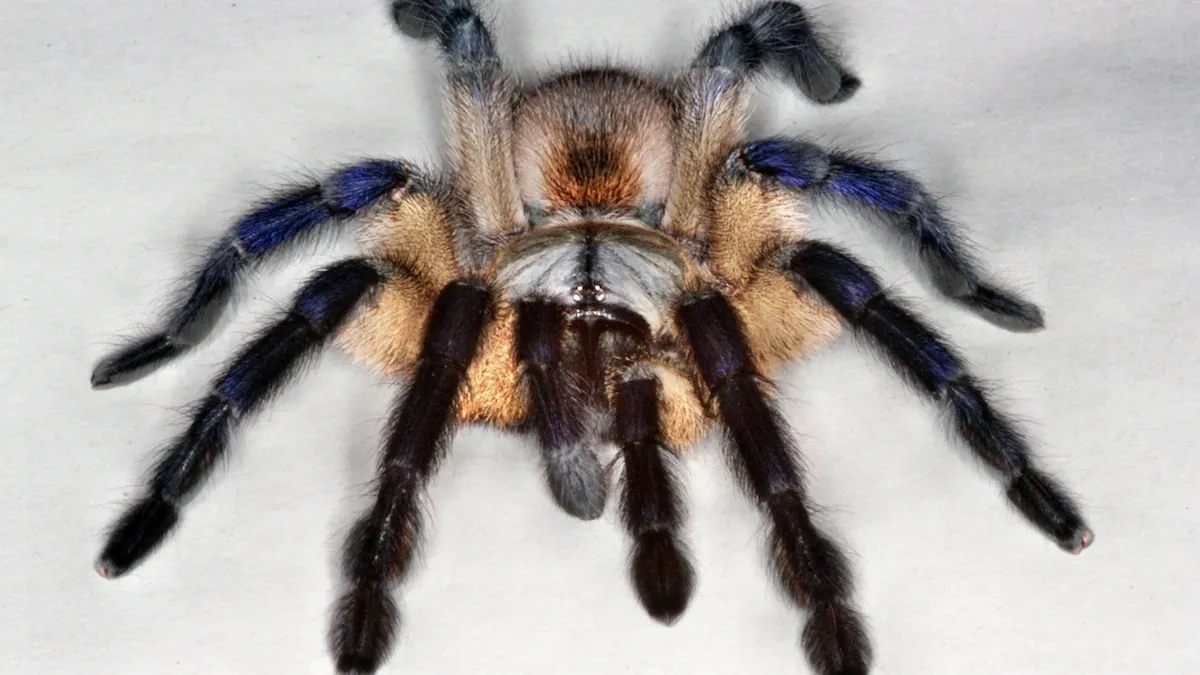The British Tarantula Society (BTS) is a leading authority for tarantula keepers, providing invaluable information and resources to ensure the well-being of these fascinating creatures. Proper care is paramount for a healthy and thriving tarantula. This guide, inspired by the BTS, outlines the top 5 essential care tips to help both novice and experienced keepers provide optimal conditions. From habitat setup to feeding strategies, we’ll cover the crucial aspects that contribute to a happy tarantula life. Following these guidelines, you can create an environment where your tarantula can flourish, offering you the chance to observe and appreciate these remarkable arachnids.
Understanding Tarantula Habitats
Creating the right habitat is the cornerstone of tarantula care. Tarantulas are sensitive to environmental changes, and a well-designed enclosure mimics their natural environment, reducing stress and promoting healthy behaviors. The BTS emphasizes the importance of understanding the specific needs of your tarantula species, as requirements can vary significantly. A poorly designed enclosure can lead to health problems, behavioral issues, and a shorter lifespan. By carefully considering factors such as substrate, temperature, humidity, and hiding places, you can provide a secure and comfortable home for your tarantula to thrive. Remember, a comfortable tarantula is a happy tarantula!
Creating the Perfect Enclosure
The enclosure size depends on the tarantula’s size and species, allowing ample space for movement, exploration, and the establishment of a territory. A secure lid is crucial to prevent escapes, and ventilation holes are necessary to maintain air circulation and prevent mold growth. The enclosure should be made of a material that can withstand the tarantula’s burrowing behavior and is easy to clean. Glass or acrylic terrariums are common choices, but make sure they have proper ventilation and secure lids. The enclosure should provide a sense of security, enabling the tarantula to exhibit natural behaviors such as burrowing or web-spinning. A properly designed enclosure is not just a place to live, but an important part of keeping your tarantula healthy.
Substrate Selection and Depth

Substrate serves as the flooring of the enclosure and is vital for maintaining appropriate humidity levels and providing a surface for burrowing. The BTS recommends using a substrate appropriate for the species, as different tarantulas have different needs. Coconut fiber, peat moss, and vermiculite are popular choices, providing excellent moisture retention and a naturalistic look. The depth of the substrate varies, with burrowing species requiring several inches to create their tunnels. For arboreal species, a shallower layer is often sufficient, but ensure the substrate still provides a good base. Regular monitoring of the substrate is essential. Watch for mold or excessive dryness and adjust your maintenance routine to keep it in top condition.
Temperature and Humidity Control
Tarantulas are ectothermic, meaning they rely on external heat sources to regulate their body temperature. Maintaining the correct temperature range is vital for their metabolism, digestion, and overall health. Use a heat mat or a low-wattage ceramic heat emitter, placing it on one side of the enclosure to create a temperature gradient. This allows the tarantula to choose its preferred temperature. Monitoring humidity is equally important. Use a hygrometer to measure humidity levels, which should be appropriate for your species. Humidity can be controlled by misting the enclosure, providing a water dish, and ensuring proper ventilation. Avoiding both excessive heat and overly dry conditions is critical to prevent dehydration, molting problems, and other health issues.
Providing Hiding Places
Tarantulas are naturally secretive creatures and require hiding places to feel secure and reduce stress. Providing appropriate hiding spots is essential for their well-being and allows them to exhibit natural behaviors. Cork bark, hollow logs, or artificial hides are excellent options. The hide should be sized appropriately for the tarantula, offering a cozy space where it can retreat. The hide should be placed on the cooler side of the enclosure, allowing the tarantula to thermoregulate effectively. Regular monitoring of the hide is crucial. Make sure the hide is clean, free from mold, and doesn’t pose any potential hazards to the tarantula. Offering a suitable hiding place helps reduce stress and promotes a sense of security, leading to a happier and healthier tarantula.
Feeding Your Tarantula the Right Diet

A balanced diet is crucial for a tarantula’s growth, development, and overall health. Tarantulas are primarily insectivores, and the types of prey they consume affect their well-being. The BTS emphasizes that the diet should consist of insects that are readily available and safe. This includes crickets, mealworms, roaches, and other commercially available insects. The size of the prey should be appropriate for the tarantula, with juveniles requiring smaller insects. Always ensure the prey is free from pesticides and other contaminants. Feeding your tarantula a nutritious diet will keep it active and vibrant, promoting healthy growth and a long lifespan. Regular feeding, along with proper hydration, is fundamental to keeping your tarantula happy and healthy.
Choosing the Right Prey
The choice of prey significantly impacts a tarantula’s health. Crickets are a popular choice, providing a good source of protein, but ensure they are gut-loaded before feeding. Mealworms are also a convenient option, but they have a lower nutritional value and should be offered in moderation. Roaches, such as dubia roaches, are a highly nutritious food source and are readily accepted by most tarantulas. Avoid feeding wild-caught insects, as they may contain pesticides or parasites. Researching the nutritional profile of various insects and providing a varied diet can help ensure that your tarantula gets the essential nutrients it needs. By choosing high-quality, healthy prey, you contribute significantly to the overall health of your tarantula.
Feeding Frequency and Amounts
Feeding frequency depends on the age, species, and growth rate of the tarantula. Spiderlings and juvenile tarantulas typically require more frequent feedings, often every other day or every few days. Adults can be fed less frequently, usually once a week or even less often. Adjust the feeding schedule based on the tarantula’s appetite and body condition. A plump abdomen indicates a well-fed tarantula, while a thin abdomen suggests that it may need more food. Overfeeding can lead to obesity, while underfeeding can stunt growth. Observe your tarantula closely, and adjust the feeding schedule based on its needs. Providing the right amount of food will keep your tarantula in good condition, allowing it to thrive. Always remove uneaten prey within 24 hours to prevent stress on the tarantula and avoid the risk of injury from the prey.
Watering and Hydration

Water is essential for all living creatures, and tarantulas are no exception. Proper hydration is vital for their molting process, digestion, and overall health. The BTS recommends providing a clean and readily accessible water source at all times. Dehydration can lead to serious health problems, so ensuring your tarantula has access to water is a fundamental aspect of tarantula care. Observe the behavior of your tarantula and adjust the watering routine based on its needs. Provide a secure water source, and maintain the water quality to keep your tarantula hydrated and healthy.
Providing Fresh Water
A shallow water dish is the most common way to provide water. The dish should be placed on the cooler side of the enclosure. Use a small, stable dish that the tarantula cannot tip over, preventing accidental drowning. The water dish should be cleaned and refilled regularly, ideally every day or every other day, to prevent the build-up of bacteria and maintain water quality. For some species, misting the enclosure can also provide a source of water, and this method is particularly useful for arboreal tarantulas. Regardless of the method, it’s essential to ensure that fresh, clean water is always available for your tarantula.
Avoiding Overhydration
While providing water is essential, overhydration can be detrimental. Excessive moisture in the enclosure can lead to fungal infections and other health problems. Avoid excessive misting, especially in enclosures with poor ventilation. Ensure that the substrate is not constantly saturated. Observe your tarantula’s behavior and the enclosure conditions to determine the appropriate hydration levels. Adjust the watering frequency and methods accordingly. Be careful to avoid spraying the tarantula directly, as this can cause stress. Maintain the right balance to provide water, supporting healthy molts, and avoiding potential health issues. Keeping the substrate damp, but not soggy, is the goal.
Maintaining a Clean Enclosure

A clean enclosure is essential for maintaining the health of your tarantula. Waste, uneaten prey, and shed exoskeletons can harbor bacteria and promote the growth of mold. The BTS emphasizes the importance of regular cleaning to prevent health issues and ensure a healthy environment. A clean enclosure is not only beneficial for the tarantula’s health but also makes it easier to observe and monitor your pet. Regular cleaning will also contribute to preventing other pest and disease issues. A clean environment makes for a happy tarantula!
Regular Cleaning and Waste Removal
Spot cleaning should be done regularly, removing uneaten prey, waste, and any visible debris. Full enclosure cleaning should be done periodically, but not too often, as it can stress the tarantula. The frequency of cleaning depends on the enclosure size, the species, and the amount of waste produced. Use a safe, non-toxic cleaner if necessary, but avoid harsh chemicals that can harm the tarantula. When cleaning, remove the tarantula from the enclosure temporarily, placing it in a secure container. Carefully replace the substrate, ensuring a clean and healthy environment. Regular cleaning will keep your tarantula healthy and provide a more enjoyable experience for the keeper.
Spotting Potential Health Issues
Regularly inspect the enclosure to detect potential health issues early. Look for signs of mold, pests, or excessive moisture. The tarantula itself should be checked for signs of illness, such as lethargy, loss of appetite, or unusual behaviors. Check for any changes in the abdomen, legs, or fangs. Check for any signs of mites. If you notice any abnormalities, consult with a veterinarian specializing in exotic animals or experienced keepers. Prompt action can prevent minor problems from escalating into serious health issues. Recognizing issues early can contribute to a longer lifespan and improved quality of life for your tarantula. The BTS can offer valuable insights.
Understanding Tarantula Behavior

Understanding tarantula behavior is key to providing appropriate care and recognizing when something is wrong. Tarantulas exhibit a range of behaviors, from burrowing and web-spinning to feeding and molting. The BTS emphasizes the importance of observing your tarantula closely to learn its normal behaviors. Understanding these natural behaviors will make it easier to detect signs of stress, illness, or other potential issues. Every species is unique, so observing your specific tarantula is essential.
Recognizing Signs of Stress
Tarantulas can display various signs of stress, indicating something is wrong with their environment or care. These signs can include loss of appetite, excessive hiding, erratic movements, or a defensive posture. Observe your tarantula closely for any changes in behavior. A stressed tarantula may also exhibit behaviors such as flicking hairs (urticating hairs), refusing to eat, or becoming very reclusive. If you notice any of these signs, review the enclosure conditions and care routine to identify and address the underlying cause. Reducing stress will contribute significantly to the overall well-being of your tarantula. Providing the right environment will also reduce stress.
Handling Your Tarantula
Handling tarantulas should be approached with caution and only when necessary. Tarantulas are generally not social animals and can become stressed by handling. Many tarantulas possess urticating hairs that can cause skin irritation. Some species also have potent venom. If you do handle your tarantula, do so gently and slowly. Always use extreme caution, and avoid handling altogether if you are unsure. Handling is not necessary for the health of your tarantula, and it’s generally best to observe and enjoy them within their enclosures. Prioritize your safety, and be mindful of the tarantula’s comfort. Understanding tarantula behaviors can help ensure safety and a positive experience.
When to Seek Expert Advice

Even with the best care, tarantulas can sometimes experience health issues. The BTS encourages keepers to seek expert advice when needed. If you notice any signs of illness or unusual behavior, consult a veterinarian specializing in exotic animals. Experienced tarantula keepers can also provide valuable insights and advice. Do not hesitate to reach out to the British Tarantula Society or other reputable resources for help. Early intervention can often prevent minor problems from escalating into serious health issues. Prioritizing the health and well-being of your tarantula is key.
Caring for a tarantula is a rewarding experience, and by following these top 5 care tips inspired by the British Tarantula Society, you can create a thriving environment. By understanding the importance of habitat, diet, hydration, and behavior, you can ensure your tarantula’s health, longevity, and happiness. Embrace the responsibility, learn from the experience, and enjoy the fascinating world of these incredible arachnids. Following the advice provided will allow you to gain experience and appreciation. Remember, responsible care leads to a happy and healthy tarantula. Always refer to the BTS or other experts if you have any questions!
